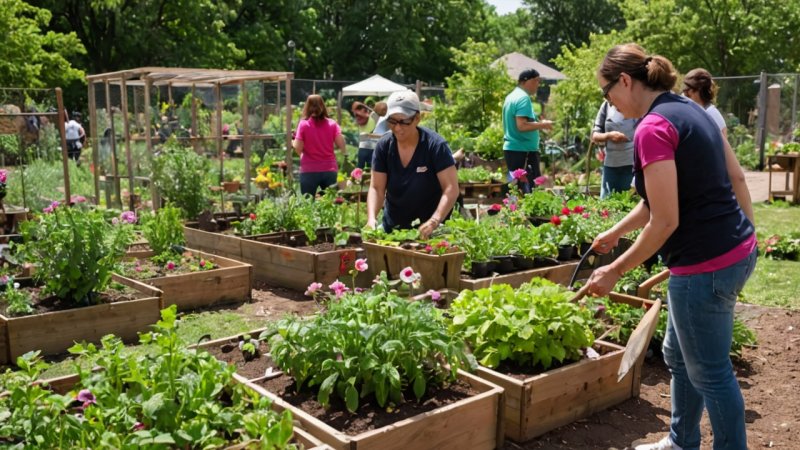Community gardens are becoming increasingly popular as a means to enhance public health and foster community engagement. These gardens not only provide fresh produce but also serve as vibrant spaces for social interaction, education, and wellness. In this article, we will explore how community gardens are promoting health in various ways.
One of the primary benefits of community gardens is their ability to improve access to fresh fruits and vegetables. Many urban areas lack grocery stores that offer healthy food options, leading to food deserts where residents have limited access to nutritious foods. Community gardens fill this gap by allowing people to grow their own produce, which can lead to better diets and improved overall health.
Moreover, engaging in gardening activities has been shown to have positive effects on mental health. The act of gardening can reduce stress, anxiety, and depression. Spending time outdoors and nurturing plants can provide a sense of purpose and accomplishment. Many community gardens also host workshops and social events, creating opportunities for residents to connect, share knowledge, and build friendships.
Physical activity is another significant aspect of gardening that contributes to health. Gardening involves various forms of exercise, from digging and planting to weeding and watering. These activities can help combat sedentary lifestyles and promote cardiovascular health. Additionally, community gardens often encourage participation from people of all ages, making gardening a family-friendly activity that can instill lifelong healthy habits.
Community gardens also play a role in educating individuals about nutrition and sustainable practices. Many gardens offer programs that teach participants how to grow their own food, understand seasonal produce, and make healthier food choices. This education can empower individuals to take control of their food sources and make informed decisions about their diets.
Furthermore, community gardens can enhance environmental health. They contribute to biodiversity by providing habitats for pollinators and other wildlife. By promoting local food production, they also reduce the carbon footprint associated with transporting food over long distances. This connection to the environment fosters a greater appreciation for nature and encourages sustainable practices within the community.
In conclusion, community gardens are more than just patches of green in urban landscapes; they are vital resources that promote health and well-being. By improving access to fresh produce, enhancing mental and physical health, providing educational opportunities, and supporting environmental sustainability, these gardens play a crucial role in building healthier communities. As we continue to face public health challenges, investing in community gardens could be a simple yet effective strategy to cultivate both health and community spirit.






